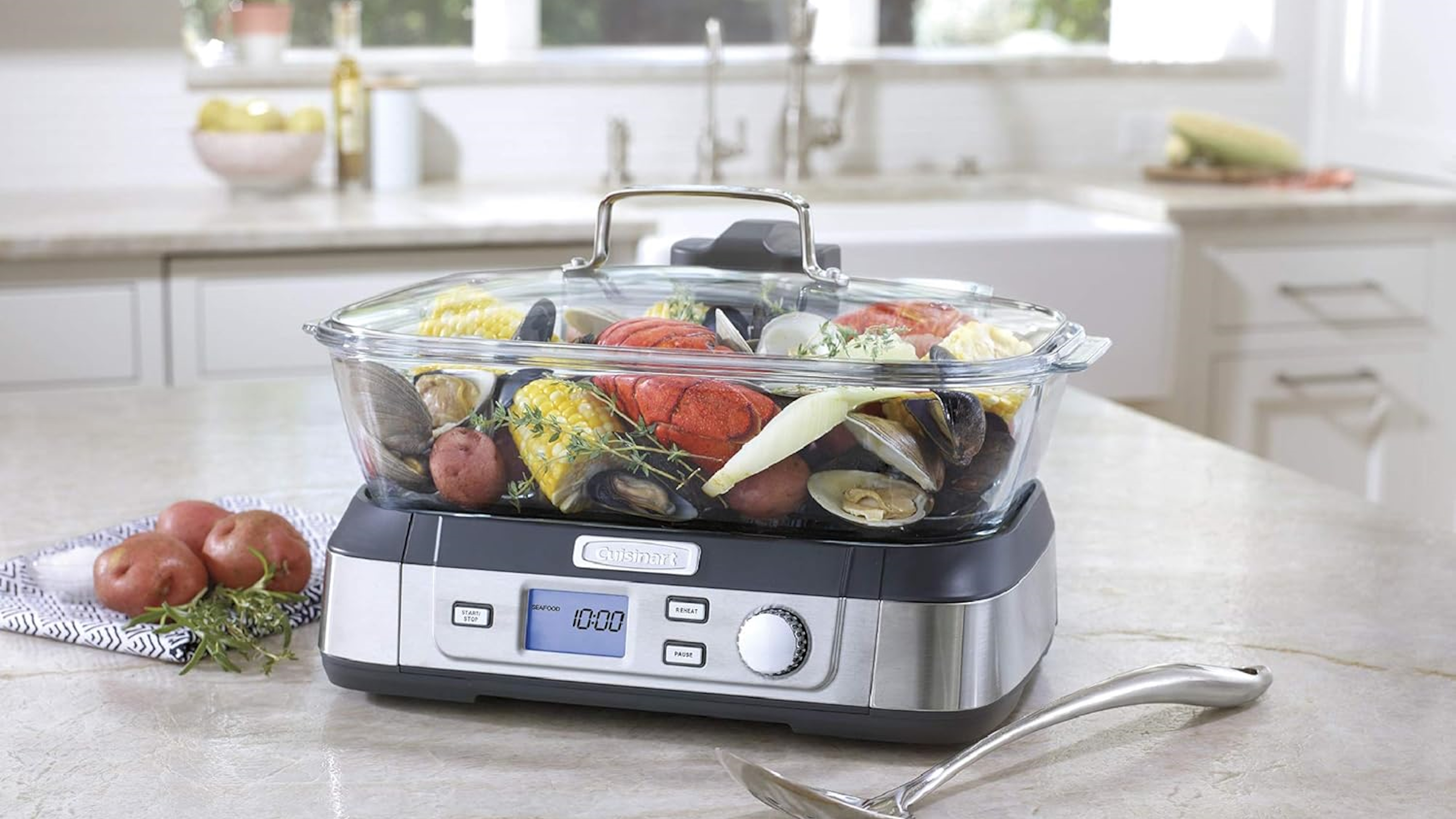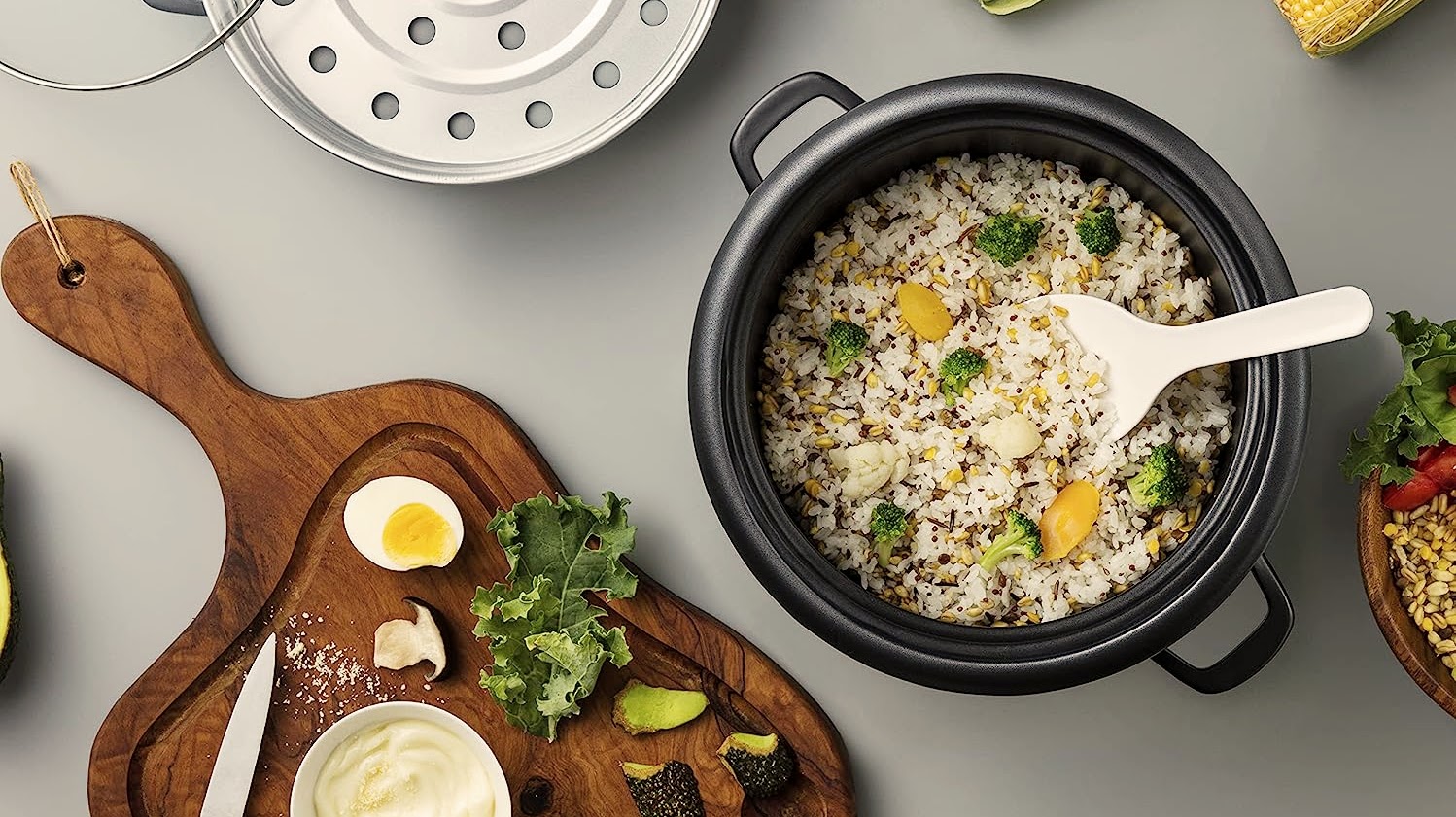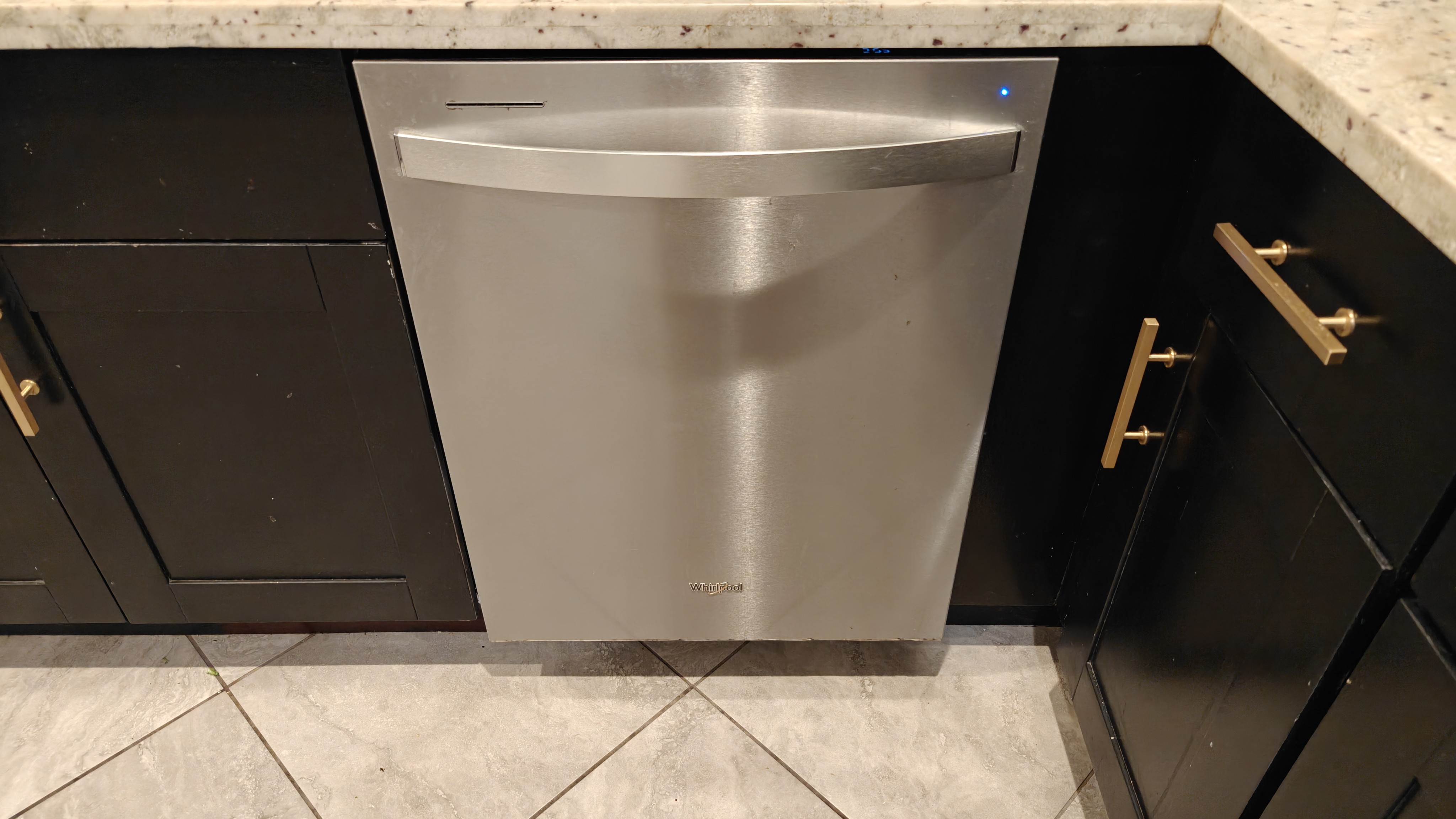Food steamers make healthy eating simple - here's our step-by-step guide on how to use one
Steaming food retains nutrients and flavor, simplifies cooking, and offers a healthier option.

Steaming food can help retain more nutrients and is often considered a healthier cooking method. Before everyone became obsessed with air fryers, the best food steamers were the go-to gadget for cooking with less oil or boiling everything into a mushy mess.
Rena Awada, owner and Head Chef at Healthy Fitness Meals LLC says the benefits of using a steamer include “cooking becoming simpler and more hands-off. You don’t have to keep watching the food—just set it and let the steam do the work, which frees you up to focus on other parts of your meal or even relax for a bit!”
She adds: “Steaming can keep the food’s natural texture and flavor intact. Unlike other methods that can make food soggy or dried out, steaming preserves its freshness, making it taste fresher and more flavorful.”
Does that sound good? If you’ve been considering investing in a food steamer but are unsure where to start, here’s everything you need to know to get the most out of the device.

Rena Awada is the owner and Head Chef at Healthy Fitness Meals LLC and has built up a following of more than 4 million followers on Instagram and 600k+ on TikTok. She shares her expertise online about how to create healthy, delicious meals.
How to use a food steamer: Step by step guide
Step 1: Chop the food evenly
If steaming vegetables, make sure they are chopped into evenly sized pieces, in order to prevent uneven cooking. Smaller pieces ensure that there won’t be overcrowding either, and it’s worth spending the time to make sure it’s consistent.
Step 2: Boil kettle or heat up water in a saucepan
Preparing the water will save time rather than adding cold water to the steamer and waiting for it to heat up. Using an electric kettle is even quicker, but boiling water in a saucepan can also be effective.
Step 3: Fill the bottom level of the steamer as per the instructions
Most steamers are usually filled to around 50-70% of their capacity. Be careful not to overfill the steamer, as it can cause it can malfunction. Filling it part way will prevent it from overflowing as it continues to heat up.
Step 4: Place the food into the steamer
Be mindful of the placement of the food, being careful not to overcrowd it, especially in a multi-tiered model, in order to make sure it cooks evenly.
Step 5: Steam the food
Check the steamer regularly to see if it needs more water but be careful not to over steam. If cooked for too long it can cause the food to go soft and lose shape and texture.
Step 6: Move the food around
If using a multi-tier steamer, rotate the tiers to ensure even cooking. It’s worth checking what level things are on and making sure that the steam is reaching them at the top level.
Step 7: Open the lid
Use a tea towel to lift the lid away from you to avoid the steam coming into contact with your skin.
Step 8: Switch off
When the cooking time is done, unplug it and allow to cool safely.

How to use a food steamer: Troubleshooting
One of the most common issues when using a food steamer is not achieving an even result. This can lead to some pieces of food being raw while others become overcooked and mushy.
Avoid Overcrowding
Rena advises, “Try to avoid overcrowding! It might seem practical to cram as much food as possible, but when the steam can’t circulate properly, the food cooks unevenly—or worse, some of it will stay undercooked.” To achieve the best results, leave space between your food.
Sign up to receive the latest news, reviews, buying guides and deals direct to your inbox
Monitor Water Levels
While steamers can be a hands-off cooking method, it’s important not to forget about them completely. If something needs to be cooked longer, ensure enough water. Rena warns: “If you forget to refill the water reservoir, your steamer can run dry and stop working. This can leave your food half-cooked or burnt. Always check the water level!” Additionally, be sure to monitor the water level as it cools.
Understand Cooking Requirements
Unlike conventional ovens, there isn’t a one-size-fits-all approach to cooking requirements. Researching what you’re cooking and adjusting the time or temperature accordingly is crucial. Rena cautions: “Each ingredient cooks at its own pace, so if you throw everything in at once without considering that, some items might end up overcooked while others are still raw.”
How to use a food steamer: Tips & tricks
Proper Food Preparation
Rena emphasizes that one of the most important aspects of using a food steamer is chopping your food properly: “Cut your food into even-sized pieces. This helps everything cook simultaneously, so you won’t end up with some parts overcooked while others are under.”
Strategic Food Placement
The placement of your food can also lead to better results. Rena advises: “Layer your food strategically. Put denser items (like root vegetables) at the bottom, where the steam hits first, and lighter foods (like leafy greens or fish) on top. That way, everything gets the right cooking time and comes out just right.”
Reviews
Whirlpool 24" Stainless Steel AI Dishwasher Review
Napoleon TravelQ PRO285 Portable Gas Grill review
Dreame L40 Ultra Robot Vacuum Cleaner and Mop review: almost hands-free cleaning
GE Profile Smart Mixer with Auto Sense review: a powerful, thorough mixer
Echo eForce DPB-2500 review: a leaf blower as a snow removal tool?
DPAS-2100 + Pro Paddle Attachment review: a new way to remove snow this winter?
Midea MAD53109APK 5.5QT Air Fryer review: a small, simple, and highly effective option
Eureka J15 Pro Ultra Robot Vacuum review: hands-free cleaning for busy families
Water Usage
Be careful with how much water you use; it can be a balancing act. Rena states, “Make sure you’re using enough water (but not too much!) If the water runs out during cooking, the steamer can stop working, but if there’s too much, it can take longer to heat up. Keep an eye on it, and refill if needed.”
Avoid Adding Flavor to Water
If you’re used to using a manual metal steamer basket over a saucepan of water, you might be tempted to add broth or flavorings to the water in your steamer. However, Rena warns against this: “Don’t put anything like herbs, broth, or spices in the water. The steam needs to stay pure so the food cooks properly. Adding stuff to the water can affect how the food absorbs the flavors. You can always season before or after steaming to get the flavor right.”

Jen Thomas, a freelance journalist and Magic Radio presenter, is renowned for her 20 years of expertise in reviewing vacuums for Top Ten Reviews. She loves leopard print, houseplants, and mixing patterns. She trains her rescue dog in her free time and tends to her balcony garden.
